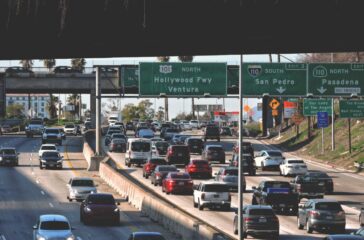Postcard from California: Freeways fracture communities, poison the air and heat the planet
In 1957, California opened its first double-decker freeway: The Cypress Street Viaduct, slicing through the heart of West Oakland toward the Bay Bridge to San Francisco. The construction displaced hundreds of Black families and businesses from a neighborhood once known as the Harlem of the West.
 EWG
EWG